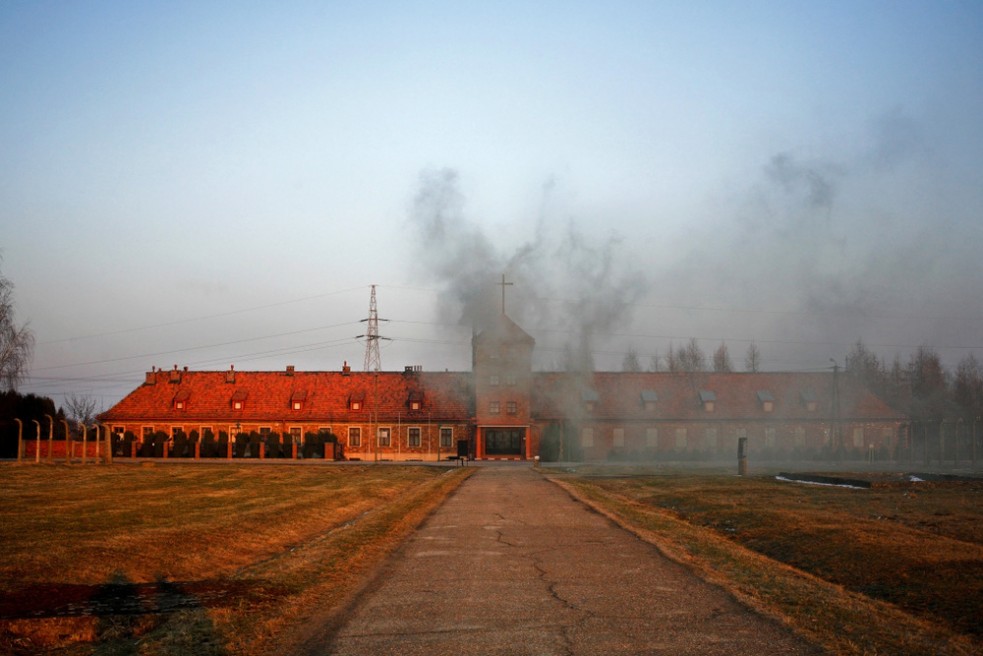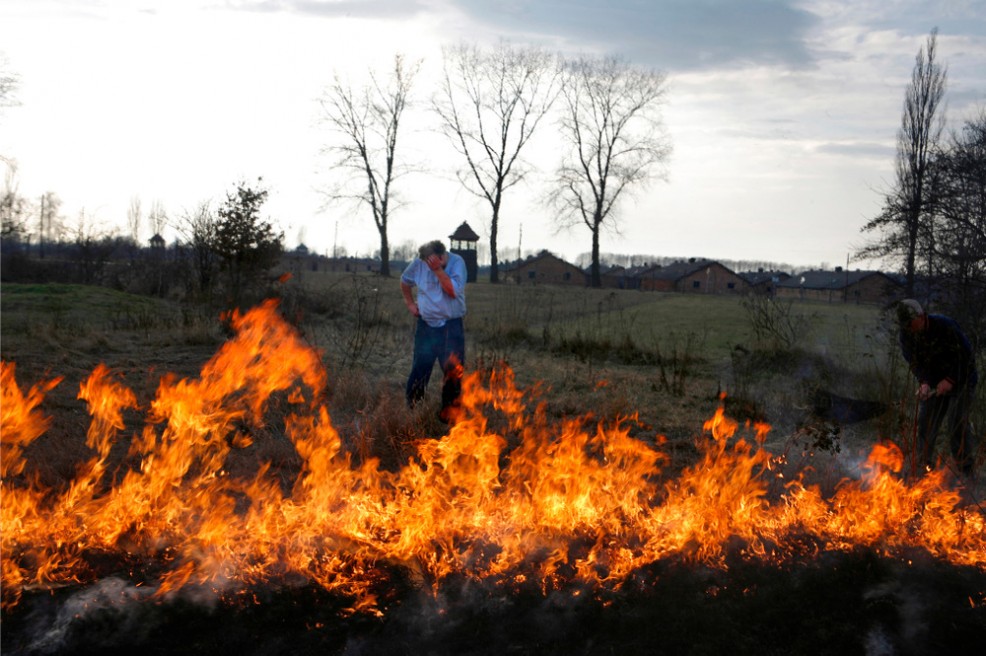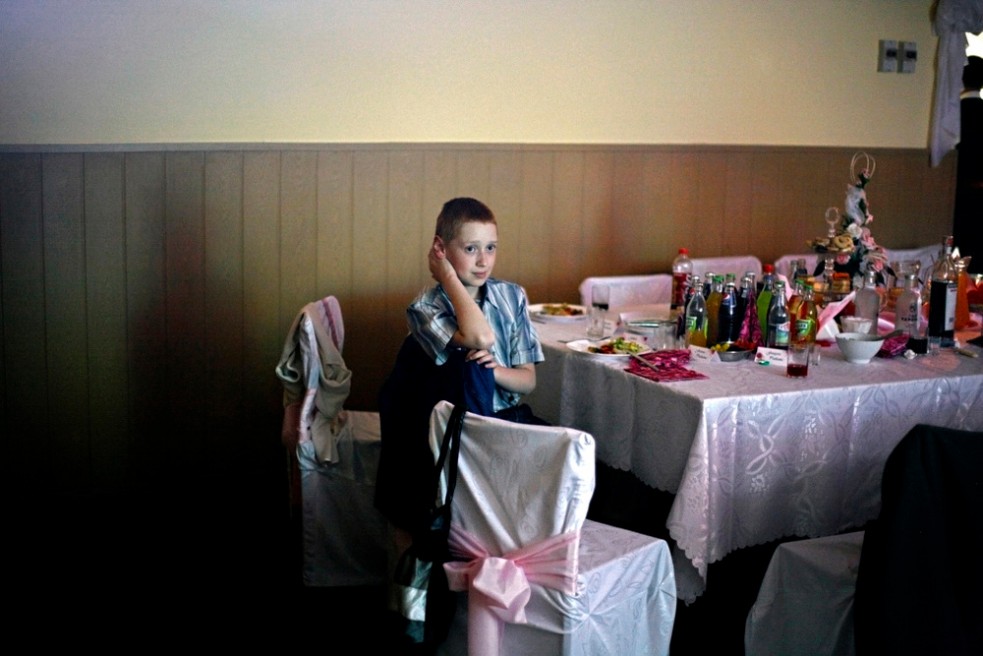“Those who knew
what was going on here
must make way for
those who know little.
And less than little.
And finally as little as nothing.In the grass that has overgrown
causes and effects,
someone must be stretched out
blade of grass in his mouth
gazing at the clouds.”- Wislawa Szymborska, Nobel Prize-winning Polish poet
This series focuses on the complex nature of life in the Polish town, OÅ›wiā™cim, better known for its German name, Auschwitz.
Countless images of concentration camps in the media shape our perception of the Holocaust through the prism of barbed wire and skeletal figures. Auschwitz however did not simply come into being. It was a concept born of hatred that took years of meticulous planning to develop. Today, its effects linger around the world in the abstract but are felt quite tangibly in the town of OÅ›wiā™cim. I began this long-term photographic study of Auschwitz in early 2010 from the perspective of the town itself, its people, and of the lasting impact of the death camp on collective identity.
In OÅ›wiā™cim, like in centers of tragedy around the world, symbolism is projected onto spaces and inanimate objects. Residents continually negotiate between this space and their memories under the shadow of trauma. Beyond the town, the words ‘Auschwitz’ and ‘Nazi’ are so often used in the wrong context that they lose power to evoke the horror of genocide. Over time, society becomes distanced from the original pain of tragedy, leaving only the shell of symbols in its wake, both in words and images. Simplified applications of these ideas are common trump cards in discussion of discrimination, or conversely, used as false labels for minor offenses in daily life. In the absence of substantive meaning for the symbols, it often becomes difficult for rational discussion to emerge over hallowed ground.
Being the focal point of Holocaust symbolism and the source of much emotion, OÅ›wiā™cim (Auschwitz) serves as an axis around which Holocaust discussion revolves. In fact, "OÅ›" means "axis" in Polish. Over the years an official protective zone of 100 meters was established around Auschwitz borders to limit encroaching construction. However, understanding the separation between camp and town requires going beyond the physical realm. The distinctions vary in the minds of residents, visitors, and the international community.
The cultural identity of the residents is the product of years of a complex, layered history. For centuries before the German occupation, about 12,000 Jews and Christians lived together in OÅ›wiā™cim. It was one of thousands of small towns in Poland that exemplified why the country held the largest population of Jews in Europe. Although the relationship of Jews and non-Jews in the country was at times tumultuous, the Nazis eliminated any potential for progress. The town was also a well-positioned trading route, where goods and culture were exchanged for generations. The Nazis chose to erect their “final solution” factory in this location for its strategic access to Eastern European Jewry.
OÅ›wiā™cim was ripped apart, with half of its residents murdered and the town converted into a site of unimaginable nightmares. In the postwar communist regime, the Nazis’ former chemical factory (Auschwitz III – Monowitz) became the lifeblood of the community for two generations, but was privatized after 1990 and cut about 90% of its workers. OÅ›wiā™cim has struggled to create jobs since, and suffers the loss of promising youth leaving for larger cities. Despite the constant flow of visitors to the camp, the town’s economy sees little gain from the tourist market.
Every year more than a million tourists visit the concentration camp museums to pay respect to the same number of innocent men, women and children who were murdered there. Because they come and go on the same day, most travelers are oblivious that Auschwitz is located in the old Polish town of OÅ›wiā™cim. Those who notice the nearby shopping mall, high-school sweethearts holding hands, and nicely-dressed families headed to church, are faced with the impossible question: how can life exist in the aftermath of such overwhelming evil? Many people are unaware of the complex history, and conflate the camp and town as a death zone that should be left uninhabited. On the other hand, many residents say OÅ›wiā™cim is a perfectly normal town, claiming a clear delineation between past and present.
The nature of this project, given the reserved character of the townspeople and the layered history of their home, requires much time and patience to go beyond the surface. With the help of the FotoVisura Grant, I will make several months-long trips to OÅ›wiā™cim to delve deep into the town’s collective memory and extract visual cues that speak to a broader truth. I wish to explore their personal, economic, and religious lives on an intimate level that can transcend the ubiquitous black and white images of the Holocaust embedded in society. I will also dedicate a large portion of my time to documenting the interaction of OÅ›wiā™cim’s residents with the death camp. With persistence I expect to gain access to the factory complex as well.
Through this opportunity, I will have the tools to collaborate with organizations dedicated to the message of tolerance to develop educational materials that discuss the long-lasting effects of genocide. As a grandson of a Holocaust survivor, my decision to explore OÅ›wiā™cim’s physical and psychological space was personally motivated. My first exposure to the town, however, led to a broader sense of responsibility for outreach. I feel it is important to examine the lingering effects of violence on memory and identity to help open dialogue and improve our perceptions of these sensitive places in modern day.






























